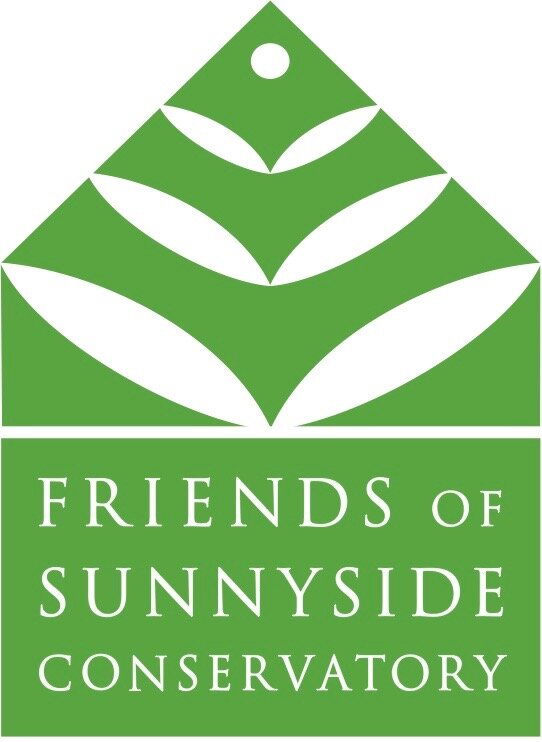The Friends
The Friends of Sunnyside Conservatory began with a few neighborhood residents, each discovering the Conservatory and having that Alice-in-Wonderland feeling of entering another world.
In 1999, with a notice in the Sunnyside Neighborhood Association newsletter, Arnold Levine officially organized the group as the Friends. He and Stacy Garfinkel have served as Friends’ Co-Chairs since the group’s founding. Our advocacy + stewardship success could never have happened without a dedicated steering committee: Chester Harstough, Andrea O’Leary, Sally Ross, pro-bono landscape architect Vera Gates @ Arterra, and press photographer extraordinaire Bill Wilson. Collectively the Friends leveraged ingenuity, pluck, and professional skills to make our neighborhood better: design, writing, public relations, lighting, cost estimation, teaching, photography, and gardening. Thank you to all of our volunteers and to the neighborhood for embracing the project.
And to William Augustus Merralls who dreamt up this place, we say thank you for making the Conservatory special enough that it has survived against all the odds and brought our community together.
The story of the restoration interweaves the Friends’ decade of advocacy, pilot programming, and inventive, can-do spirit with the Merralls’s original vision.
Friends had to build a coalition of many constituencies (including immediate neighbors, area residents, city employees, elected officials, the design team) and navigate the inevitable trying moments, delays, and bureaucracy that come along with a large public works project.
We had to educate ourselves about the design process–from the drafting of the conceptual design (drawn by Vera Gates), through the development of the design and construction documents and extensive series of design and public meetings. We learned from Vera and Edward Chin–our welcoming landscape architect from DPW–how to scrutinize site, grading, and planting plans, view elevations, work with story poles, and think hard about material specifications, and hardscape/landscape proportions. Making the tight, steeply sloped lot of the Conservatory grounds ADA accessible was no easy feat. More broadly, we learned about adaptive re-use and community building: how to preserve the Conservatory grounds, develop a new garden, and create a new event and community space out of a dilapidated shell.
And did we say meetings–over the back fence, out on the street, in the community, with RPD, with our pro-bono angels, in city hall, before the Board of Supervisors, its various subcommittees, the Recreation + Park Commission, and the Landmarks Preservation Commission. We shared our vision, lobbied for our cause, and bent every ear we could find. Our work stands on that of earlier generation of activists in the 1970, including Ken Hoegger and Betty Landis. It was Landis who slept in her car to prevent further demolition of the building after the east wing and windows were removed.
We couldn’t have been more pleased when the renovation of the Conservatory was awarded Project of the Year Award 2009 for Historic Restorations (under $5 million) by the Northern California chapter of the American Public Works Association covering 11 counties.
